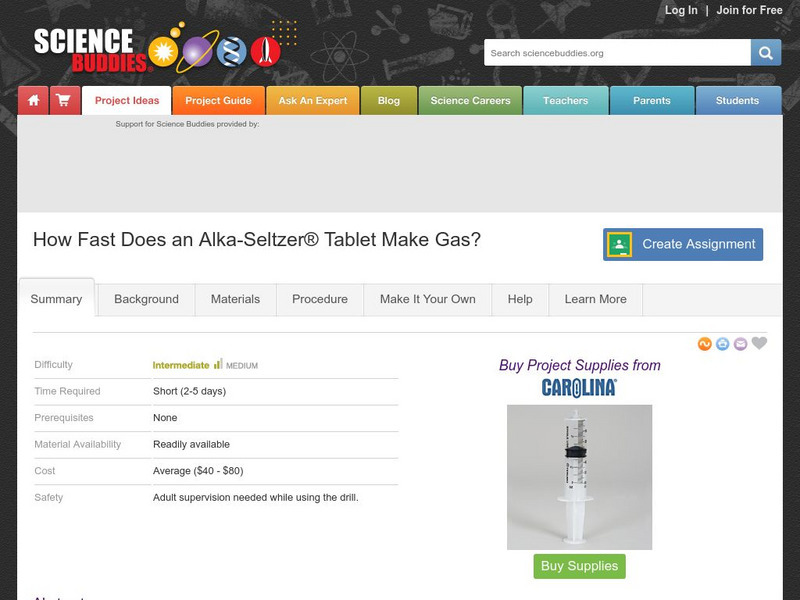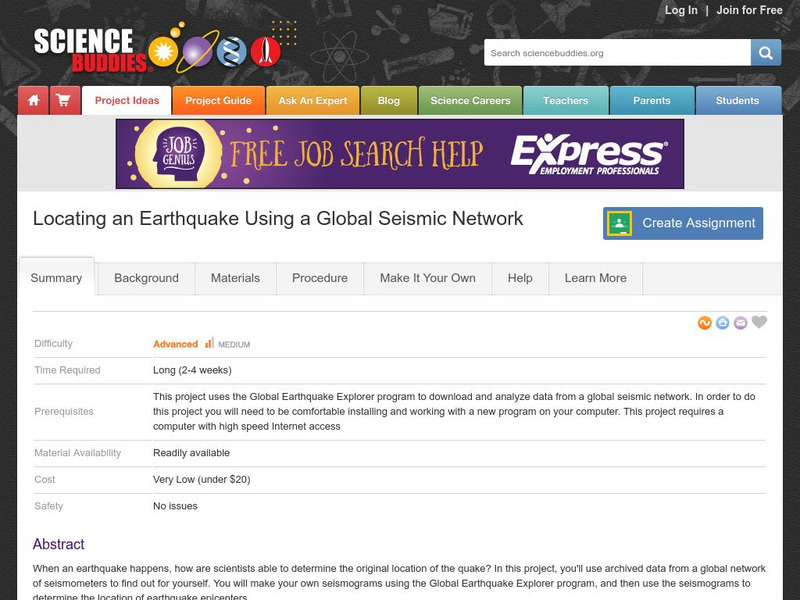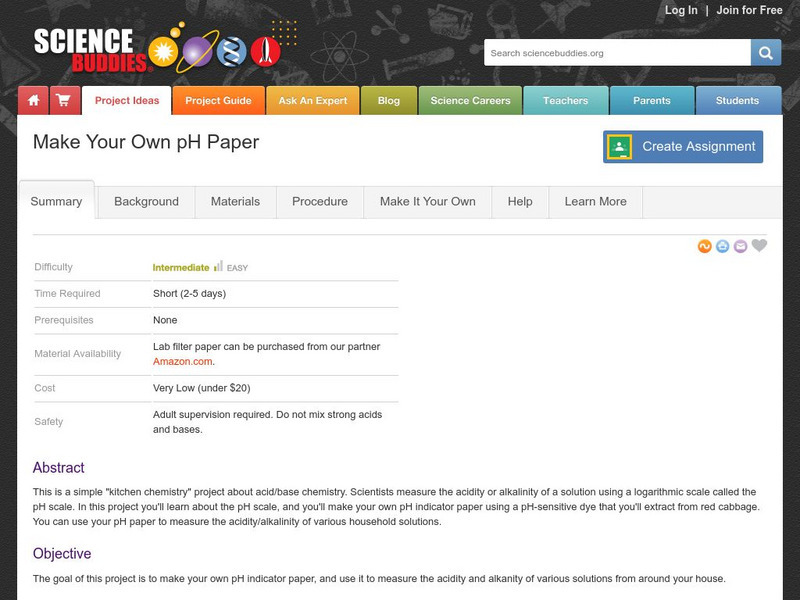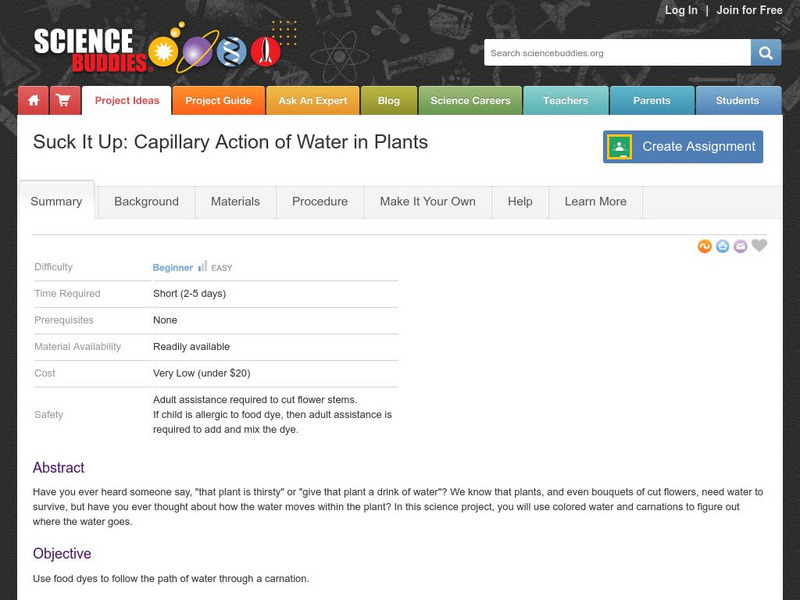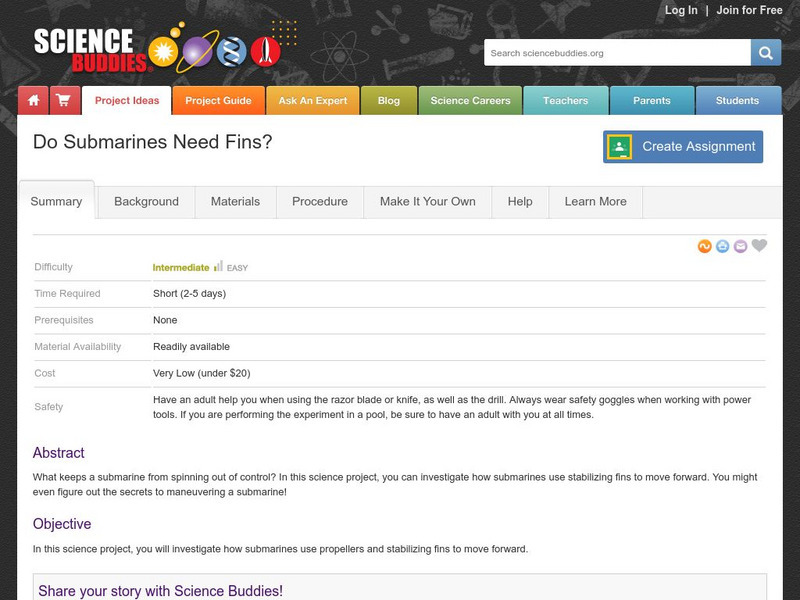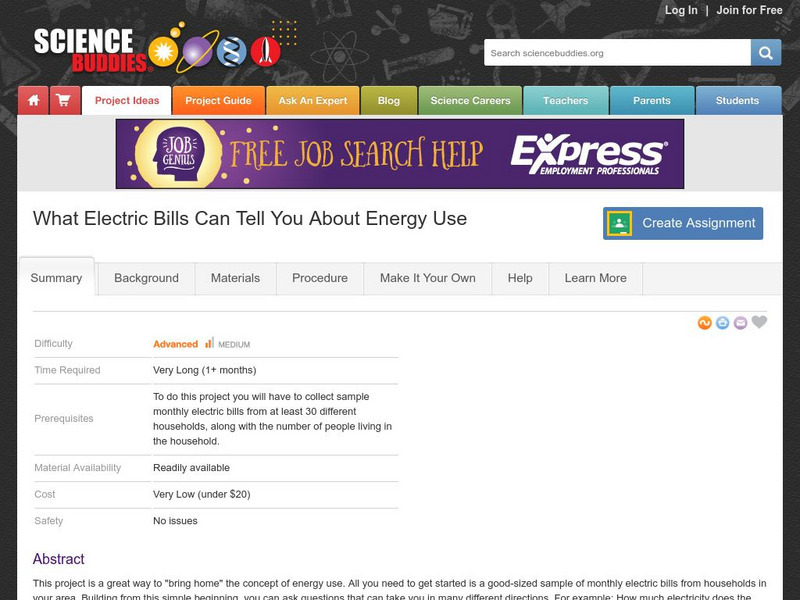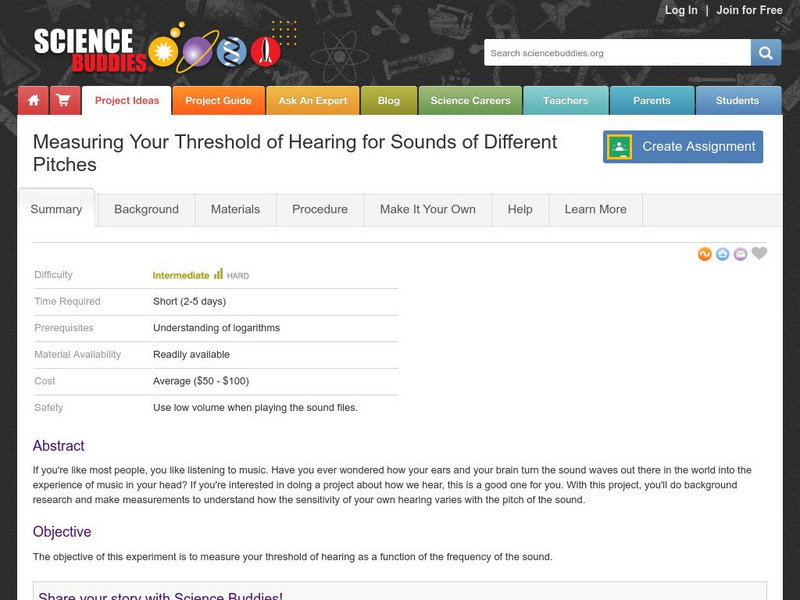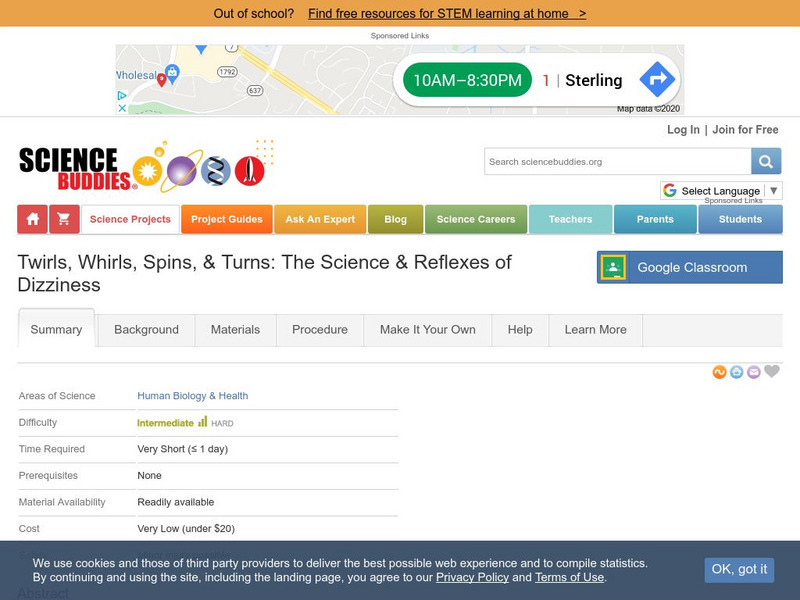Science Buddies
Science Buddies: How Fast Does an Alka Seltzer Tablet Make Gas?
This is a straightforward, fun project to measure the rate of the chemical reaction that occurs when Alka-Seltzer tablets are plopped into water. You'll track the volume of carbon dioxide gas produced at regular intervals after the...
Science Buddies
Science Buddies: Locating an Earthquake Using a Global Seismic Network
When an earthquake happens, how are scientists able to determine the original location of the quake? In this project, you'll use archived data from a global network of seismometers to find out for yourself. You will make your own...
Science Buddies
Science Buddies: Can You Change the Rate of a Chemical Reaction?
The ingredients in Alka-Seltzer tablets undergo a chemical reaction that produces carbon dioxide gas as soon as the tablets hit water. Do you think you can cause the tablets to produce gas faster by breaking them into smaller pieces...
Science Buddies
Science Buddies: Measuring the Earth's Core With Seismic Waves
When an earthquake occurs, seismic shock waves travel out through the earth from the source of the event. The shock waves travel through the earth (body waves), or along the Earth's surface (surface waves), and can be recorded at remote...
Science Buddies
Science Buddies: Do Milkweed Bugs Show a Color Preference for Egg Laying Sites?
Milkweed bugs, as their name suggests, have a close relationship with the milkweed plant. The plant produces a milky sap, and toxic compounds, but somehow the milkweed bug is unaffected by them. Instead, it concentrates chemicals from...
Science Buddies
Science Buddies: What Seeds Do Birds Prefer to Eat?
In this project you'll build a bird feeding platform with four separate feeding areas. You'll be able to observe birds at close range, find out what birds inhabit your area, and learn about their seed-eating preferences. So get out your...
Science Buddies
Science Buddies: Applying Hooke's Law: Make Your Own Spring Scale
Hooke's law says that the opposing force of a spring is directly proportional to the amount by which the spring is stretched. How accurately Hooke's law describe the behavior of real springs? Can springs be used to make accurate scales...
Science Buddies
Science Buddies: Make Your Own P H Paper
In this "kitchen chemistry" project about acid/base chemistry, you will measure the acidity or alkalinity of a solution using a logarithmic scale called the pH scale. As you learn about the pH scale, you will have the chance to make your...
Science Buddies
Science Buddies: What Is the Maximum Intermediate Height for a Siphon?
If you have ever had a fish tank, you have owned an operating siphon. A siphon is a handy device for emptying out a liquid reservoir that has no drain. As a result, they are great for cleaning fish tanks. Liquid in a siphon flows...
Science Buddies
Science Buddies: The Effects of Card Counting on a Simple Card Game
If you enjoy playing cards, this project will get you thinking about strategy in card games and help you become a better card player. Explore probability using computer simulations and the practice of counting cards.
Science Buddies
Science Buddies: What Makes Ice Melt Fastest?
If you live in a place that gets cold in the winter, you have most likely seen trucks spreading a mixture of sand and salt on the streets after a snowfall to help de-ice roads. This basic chemistry project gives you clues to discover how...
Science Buddies
Science Buddies: Saturated Solutions: Measuring Solubility
Many essential chemical reactions and natural biochemical processes occur in liquid solutions, so understanding the chemical properties of liquid solutions is fundamentally important. This project will challenge you to discover how much...
Science Buddies
Science Buddies: Wave Blockers
What do the radio, TV, radio controlled cars, and cell phones all have in common? They all use invisible waves to transmit information. Find out which materials block radio waves, and which materials allow radio waves to pass through in...
Science Buddies
Science Buddies: Suck It Up: Capillary Action of Water in Plants
We know that plants, and even bouquets of cut flowers need water to survive, but we often do not think about how water moves within a plant. In this science project, you will use colored water and carnations to discover how water travels...
Science Buddies
Science Buddies: Do Submarines Need Fins?
In this science project, you can investigate how submarines use stabilizing fins to move forward. Exploring friction and buoyant force you will get closer to understanding how these large ships function. Research resources are included...
Science Buddies
Science Buddies: Is That Cat Fat?
There are over 58 million overweight cats and dogs in the United States alone. In this science project you will determine what percentage of the pets you know are overweight and how their weights compare to weight of pets throughout the...
Science Buddies
Science Buddies: How Does a Chick Breathe Inside Its Shell?
Whether a chick can breathe inside its shell is an interesting question. Every animal needs oxygen to survive, so the chick must get air somehow. Try this science project to discover if the pores in a chicken egg shell allow water to...
Science Buddies
Science Buddies: Liver Stinks!
Sometimes science can be really messy or use pretty disgusting ingredients. That is what it takes to understand how the world works, even if the experiment isn't pretty. If you like chemical reactions that stink and ooze foamy bubbles...
Science Buddies
Science Buddies: Mag Nificent Breakfast Cereal
You will devise a way of testing foods for supplemental iron additives in this experiment provided by Science Buddies. Then you will use your design to test different breakfast cereals to see how much iron they contain. The goal is to...
Science Buddies
Science Buddies: What Electric Bills Can Tell You About Energy Use
This project is a great way to "bring home" the concept of energy use. All you need to get started is a good-sized sample of monthly electric bills from households in your area. Building from this simple beginning, you can ask questions...
Science Buddies
Science Buddies: Deep Knee Bends: Measuring Knee Stress With a Mechanical Model
Prosthetic limbs and artificial joints can help people with disease or injury lead a normal life. Sports medicine or physical therapy is also an area that relates to this experiment. Either way, this project serves as a good match if any...
Science Buddies
Science Buddies: Measuring Your Threshold of Hearing
How your ears and your brain turn the sound waves out there in the world into the experience of music in your head, remains a mystery to many, but yet we all experience and even enjoy sounds and music. If you're interested in doing a...
Science Buddies
Science Buddies: Twirls, Whirls, Spins, & Turns: Reflexes & Dizziness
Tilt-A-Whirls, Merry-Go-Rounds, Spinning Tea Cups. Just the thought of these rides is enough to make someone dizzy, or queasy. Learn about spins, turns, and the mixed signals that fire in our brains when the sensation of dizziness takes...
Science Buddies
Science Buddies: Can Garlic Prevent Crown Gall?
Crown gall is a plant disease caused by the soil bacterium Agrobacterium tumefaciens. This project uses tomato plants to investigate whether garlic extract can prevent crown gall infection. Though this is a lengthy experiment, a...
Other popular searches
- Science Fair Projects Ideas
- Science Fair Projects Topics
- Motion Science Fair Projects
- Coke Science Fair Projects
- Food Science Fair Projects
- Sports Science Fair Projects
- Cool Science Fair Projects
- Csi Science Fair Projects
- Edible Science Fair Projects
- Casi Science Fair Projects


